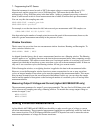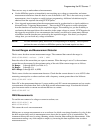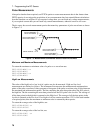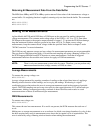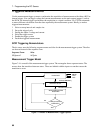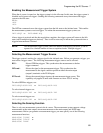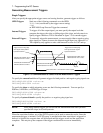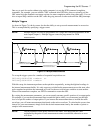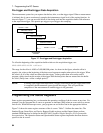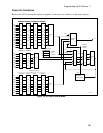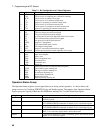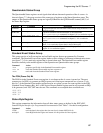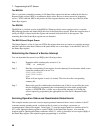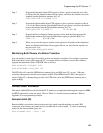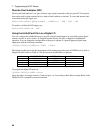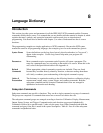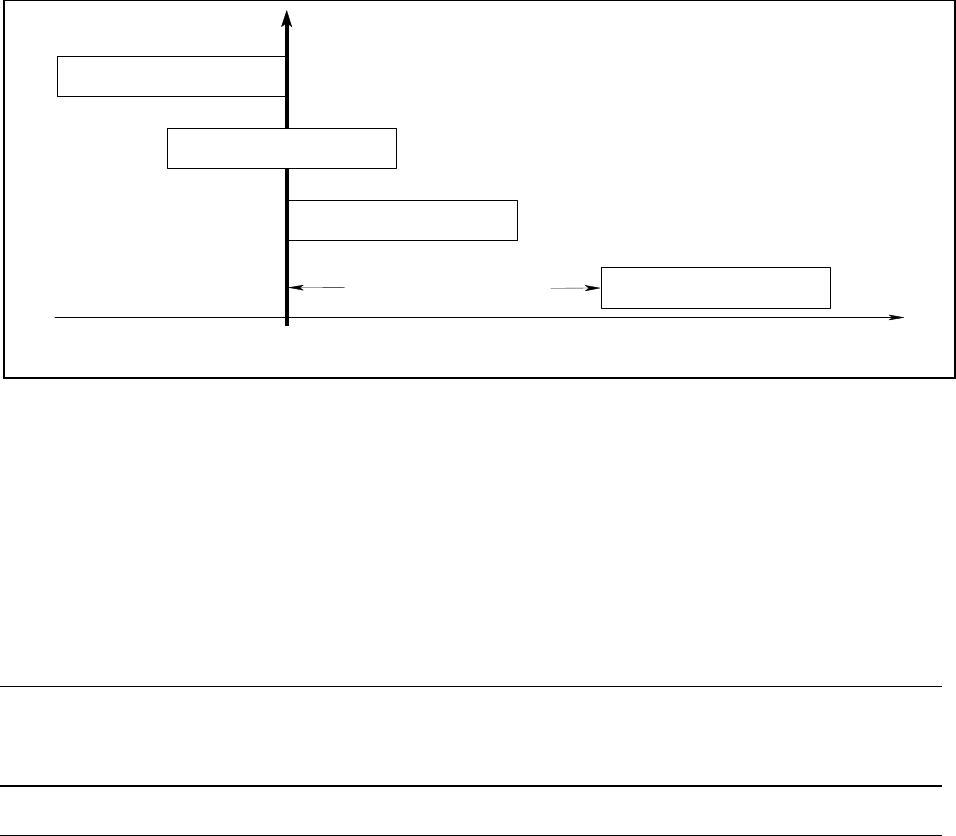
7 - Programming the DC Source
84
Pre-trigger and Post-trigger Data Acquisition
The measurement system lets you capture data before, after, or at the trigger signal. When a measurement
is initiated, the dc source continuously samples the instantaneous signal level of the sensing function. As
shown in figure 7-7, you can move the block of data being read into the acquisition buffer with reference
to the acquisition trigger. This permits pre-trigger or post-trigger data sampling.
4096 DATA POINTS
4096 DATA POINTS
4096 DATA POINTS
OFFSET = -4095
OFFSET = -2048
OFFSET = 0
4096 DATA POINTS
A
CQUISITION
TRIGGER
OFFSET = 0 to 2
9
TIME
Figure 7-7. Pre-trigger and Post-trigger Acquisition
To offset the beginning of the acquisition buffer relative to the acquisition trigger, use:
SENS:SWE:OFFS:POIN <offset>
The range for the offset is -4095 to 2,000,000,000 points. As shown in the figure, when the offset is
negative, the values at the beginning of the data record represent samples taken prior to the trigger. When
the value is 0, all of the values are taken after the trigger. Values greater than zero can be used to
program a delay time from the receipt of the trigger until the data points that are entered into the buffer
are valid. (Delay time = offset x sample period).
NOTE: If, during a pre-trigger data acquisition, a trigger occurs before the pre-trigger data count
is completed, the measurement system ignores this trigger. This will prevent the
completion of the measurement if another trigger is not generated.
Programming the Status Registers
Status register programming lets you determine the operating condition of the dc source at any time. For
example, you may program the dc source to generate an interrupt (SRQ) when an event such as a current
limit occurs. When the interrupt occurs, your program can act on the event in the appropriate fashion.
Figure 7-8 shows the status register structure of the dc source. Table 7-1 defines the status bits. The
Standard Event, Status Byte, and Service Request Enable registers and the Output Queue perform
standard GPIB functions as defined in the IEEE 488.2 Standard Digital Interface for Programmable
Instrumentation. The Operation Status and Questionable Status registers implement functions that are
specific to the dc source.



